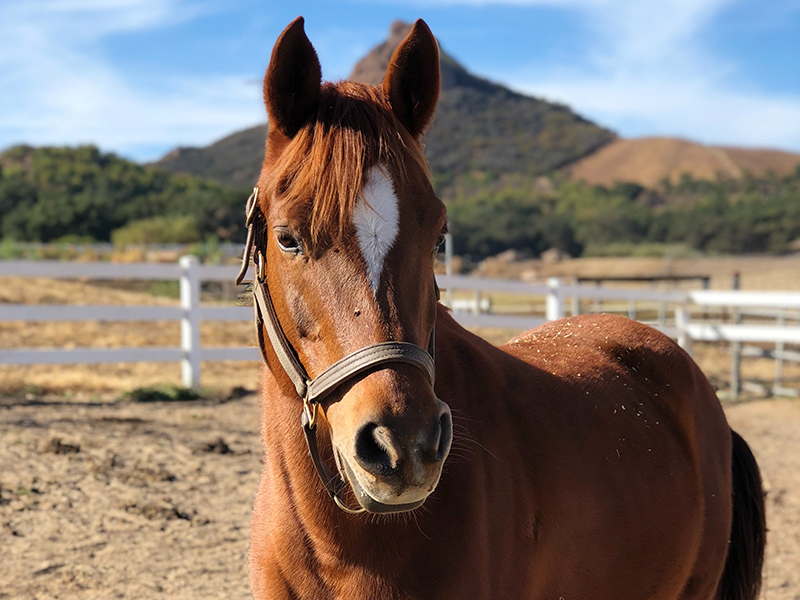Flash is a two-year old miniature pony with a big personality! His owner contact us as he was dragging one of his hindlimbs. Following examination, Flash was diagnosed with upward fixation of the patella, also known as ‘locking stifle’ or ‘locking patella’.
What is locking patella?
Just as in the human knee, the equine stifle is the junction between the bottom of the femur and the top of the tibia. The patella (knee cap) is a mobile structure that glides over the joint when the horse moves, but can also be locked in position by various ligaments and tendons. When a horse is standing normally, the stifle is locked into a weight-bearing position, whereby the medial patella ligament hooks over a ridge on the end of the femur. This allows the horse to sleep standing up, or rest one leg for long periods. When the horse goes to move, this patella ligament must unfasten, allowing the patella to ‘unlock’ and the stifle and hock to flex. “Stifle lock”, or “upward fixation of the patella”, occurs when the ligament becomes stuck in the upward position. In mild cases, the patella may lock during work and the horse may drag its toe for a couple of strides. In severe cases, however, the leg can remain stuck in extension, as was the case for Flash.
The direct cause of the condition is not fully understood, however its likelihood can be influenced by factors such as injury, muscle mass, conformation, poor fitness and immaturity. The photo below shows Flash with his left hindlimb in the locked position, causing him to drag his toe.

Flash’s treatment…
Flash was initially treated with an anabolic steroid, which is thought to alter the tension of the patella ligaments, thereby improving the biomechanics of the apparatus. This is considered a more conservative treatment of this condition and can be highly effective in some cases. Another form of treatment is to inject the medial patella ligament with a mildly irritant substance (e.g. iodine 2% in an oil base), with the aim of achieving a localised inflammatory reaction, thereby causing it to scar. This causes the ligament to become shorter, thicker and less elastic, thereby reducing the likelihood of stifle lock occurring.
Flash unfortunately did not improve following treatment with anabolic steroids, and so it was decided that a ‘bilateral medial patella ligament desmotomy’ (surgery to cut the medial patella ligaments) was the best option for him given the severity of his condition. This procedure releases the patella from the locked position, allowing the stifle to flex again.
Although this surgery sounds serious, it is a relatively easy procedure that is usually performed under standing sedation and local anaesthesia.

The diagram above shows the anatomy of the stifle, in particular, the position of the medial patellar ligament that is cut during the procedure.
Flash happily reunited with his owner after his operation!


